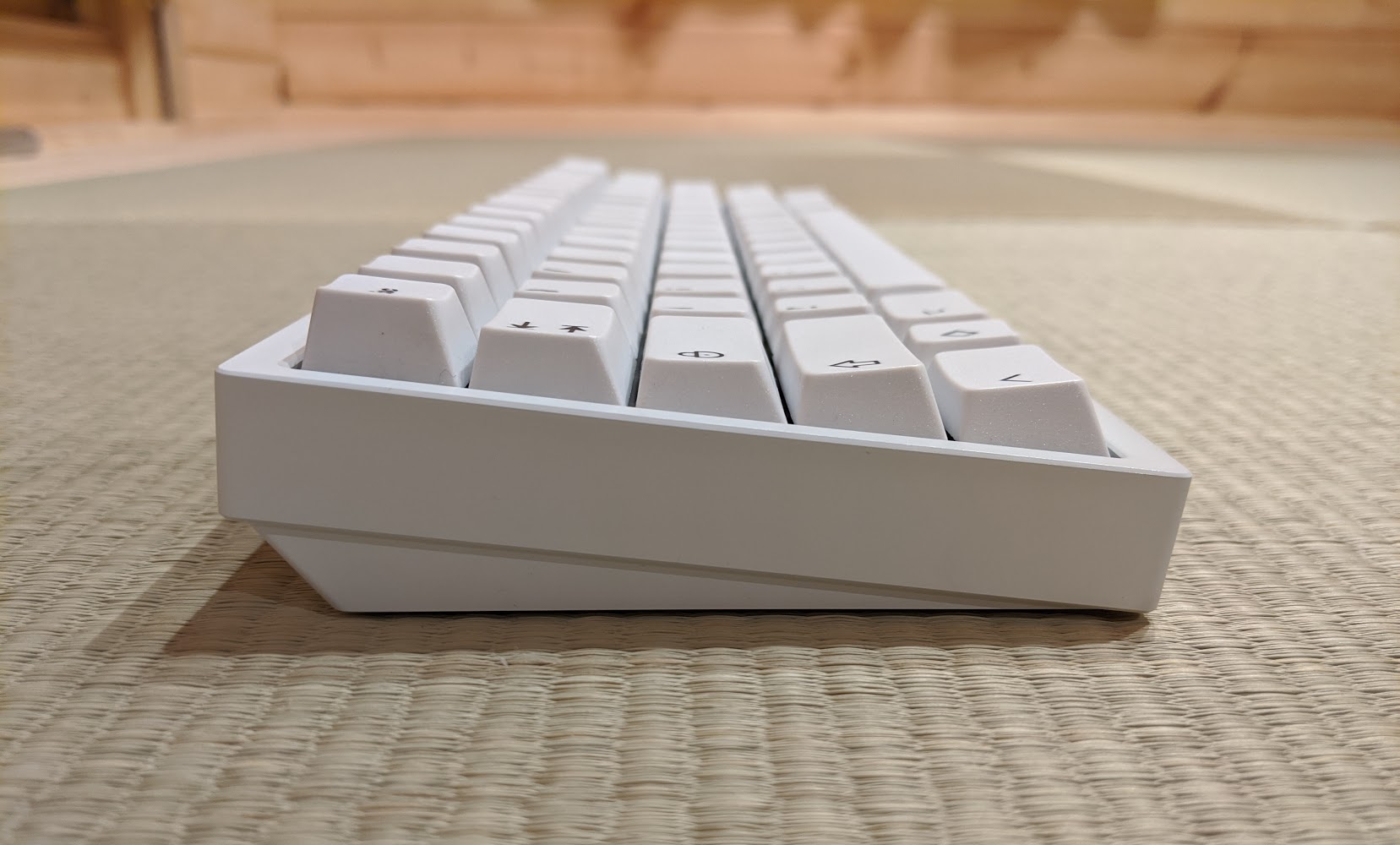How to Keyboard
Pages
How to Keyboard - Page 4
The capstone
So you’ve decided on a pretty case and some nice switches, and now need the final piece of the puzzle - the keycaps.
These are the actual key bits that your fingers touch during typing, and are a major factor in how the keyboard feels, looks, and sounds. In general they come in groups called keysets.
Expensive plastics
Some keysets might give you sticker shock when first looking around - some keysets can exceed 100 dollars just for small parts of plastic.
This comes down to their manufacturing method and design - let’s take a look into each bit.

Making a legend
Legends refer to the printed letters and characters on the keycaps. These are printed onto the surface of the keycaps in a variety of methods described below:
The not-so-enthusiast-grade:
- Laser-engraved - A laser is used to blast into the keycap, etching the legends into place. Usually has a burnt-out look that is far from photogenic, and is usually tangible upon touch.
- Pad-printed - The legends are printed onto the surface of the keycap. These are also tangible upon touch, and also tend to scrape and fade off from extended use.
The enthusiast grade:
- Dye-sublimation (dye-sub) - Ink is heat-transferred deep into the plastic, well beyond the depth that can wear off from regular use. These sharp prints are very permanent, and can last decades easily without much issue.
Since lighter ink can’t be printed onto darker base plastic, this has its limitations in what designs can be made. - Double-shot - One layer of plastic is cast to form the base of the keycap, and another layer of plastic is injected into it to “form” the legends.
This is also a very durable method of manufacture, and has no color restrictions save for the colors that can be made with the plastics themselves.
In this guide, we’ll focus on dyesub and doubleshot as the two major options - after all, you don’t want to ruin a dialed-in keyboard build with a cheap surface to type on.
A material world
Two main plastics are commonly used in the world of keycaps:
- ABS - Easy to form, and tends to be brighter in tones It tends to become shiny/polished with heavy use, and is weak against UV light and turns yellow over time when heavily exposed.
Commonly used for double-shot. - PBT - Difficult to form, and tends to be duller in colors. It resists becoming shiny with heavy use, and is yellowing-resistant. Commonly used for dye-sub.

The sculpt
In the custom keyboard realm, keycap profiles usually refers to the physical shape and sculpt of the keycaps.
Keycaps come in various shapes and sizes, but are generally categorized by these criteria:
-
Sculpted or Uniform.
Sculpted keysets have a different key shape per-row like in the image above, fitting closely to the movement of the fingers.
Uniform keysets have an identical shape for each row of keys. -
Cylindrical or Spherical.
Cylindrical keys are the classic typical kind, with a horizontal “scoop” that looks like one carved a cylinder out of the top of the key. Spherical keys are round, with a “dish” that looks like one carved a sphere out of the top of the key. -
Tall or Short (or somewhere in between).
Some key profiles tend to be very tall, whereas others sit more low-profile.
Common key profiles include the following:
- OEM - The most generic of them all, the sculpted cylindricals found on the mass produced keyboards of the world.
- Cherry - The classic Cherry profile, which is similar to OEM but sits a bit thinner with more fine-tuned angles. There’s a reason why Cherry profile is so vastly popular in the world of custom keyboards - I recommend buying one and giving it a shot.
- DSA and SA - Classic spherical profiles of varying sculpts and heights.
When I originally wrote this guide in 2020, there were only a handful of profiles and it wasn’t much issue listing them all; nowadays there are so many profiles with new ones coming out so frequently that I recommend looking around for what’s available.
The other sculpt
It’s possible to go beyond these profiles to an extreme degree.
Such is the world of hand-sculpted, hand-painted artisan keycaps, in which each cap is an art piece upon your keyboard.
These can be very exclusive and expensive, requiring first getting through a raffle then costing hundreds or thousands of dollars each.
For your very end-game keyboard build, you may wish to crown it with a sculpted keycap of your choice.
Making it fit
One note is that different keysets come with different key contents - for example, one set might not have every single exact spacebar length in the world.
When buying a keyset, compare the kit contents to your keyboard layout, and make sure that the set contains all the keys needed to cover it.
This was very problematic when I wrote the guide back in 2020; nowadays in 2024, keyset kitting has improved to the point where most keysets can cover most keyboards.
Now you are ready for the final section.
Next Page